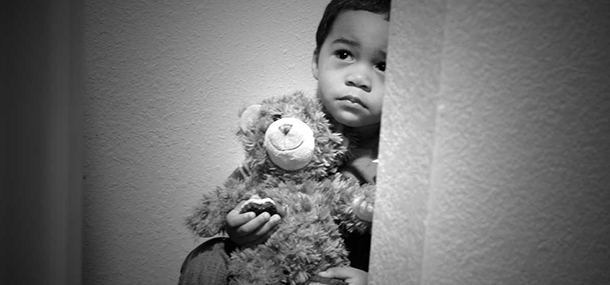
(U.S. Air Force photo illustration/Steve White)
Child Abuse: A Difficult Topic to Discuss
In a world as big as ours accidents will happen and children can be hurt. As parents, that can be scary because our number one priority is to keep our children safe. So whenever there is a report on the news about child abuse it seems so shocking and unbelievable that an adult would knowingly hurt a child. However, the reality is that close to 700,000 children are victims of abuse each year and close to 2000 children die from abuse or neglect each year. Some of these children are brought to the pediatrician’s office or to the Emergency Department with obvious signs of injury but many times there may be little or no outward sign of abuse.
The Radiology Department at Cincinnati Children’s plays a key role in helping to detect and diagnose physical abuse. When child abuse is suspected, a skeletal survey is done in our Radiology Department. This includes 21 x-ray pictures of all the bones in the body that can identify both known and unsuspected injuries. Initially, the x-rays may not clearly show a new fracture. Therefore, in children suspected of being abused, another skeletal survey is often done about two weeks later. These images may show healing around broken bones which makes it easier to see subtle fractures.
When a child is being or has been abused, x-ray images may demonstrate broken bones, often rib fractures, skull fractures and fractures near the growth plates that can be difficult to detect on a physical exam by the doctor. Many of these types of fractures are seen almost exclusively in abused children and would not be present in a normal child who has suffered from a minor trauma.
Children suspected to be victims of abuse will also have a head CT scan. This helps the doctors identify head injuries including skull fractures, bleeding around the brain, or actual brain injury. A CT scan is important for detecting injuries that might need urgent medical or surgical treatment. A CT of the chest and the abdomen might be needed to evaluate liver or bowel injuries.
Here at Cincinnati Children’s we have a dedicated team that helps investigate suspected cases of child abuse. The Child Abuse Team at the Mayerson Center for Safe and Healthy Children treats more than 2,000 children for whom abuse is suspected—an average of six to seven suspected abuse cases a day. The team includes child abuse physicians, a radiologist, specialized nurses, social workers, chaplains and representatives from children’s services, the police and prosecutors, all working collaboratively in the investigation and treatment of child abuse victims. Children from 22 Ohio counties as well as children from Kentucky and Indiana are treated at the Mayerson Center. While it saddens us to think of so many children suffering abuse or neglect we find hope knowing that The Mayerson Center at Cincinnati Children’s provides comprehensive care and is recognized as a specialized Child Advocacy Center, focusing on minimizing stress for all children as they are cared for during this process.
Contributed by Dr. Meg Caré edited by Catherine Leopard (CLS).